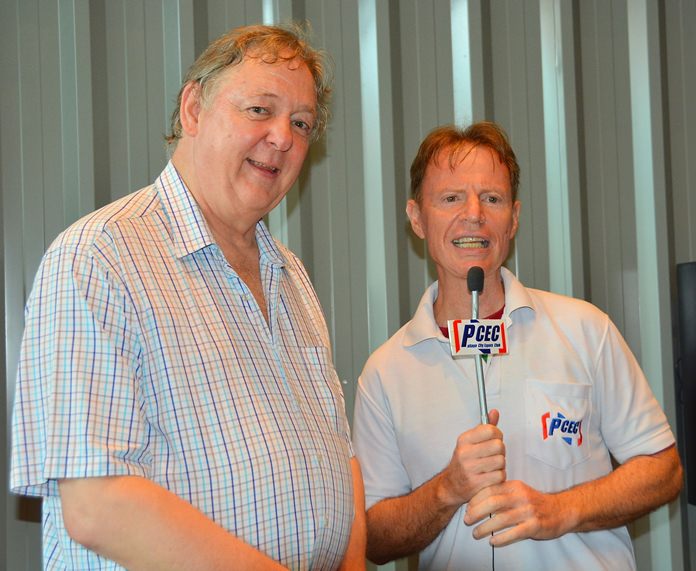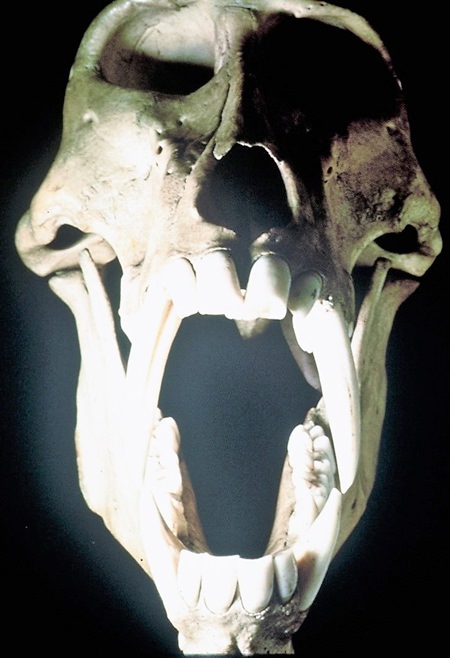
What has teeth got to do with evolution? This question was amply answered by Dr. Christopher Telford, B.Sc., B.D.S. a practicing dentist from Australia during his presentation to the Pattaya City Expats Club (PCEC) at their Sunday, July 16, meeting. His topic was “Teeth and Evolution”, specifically, he talked about the evolution of mankind and why we are more “intelligent” than other animals.
He has practiced dentistry since 1976 and has extensive experience in private and hospital practice in Australia, New Zealand and United Kingdom. Early in his career, Dr. Telford met another dentist named Dr. Ron Every, the founder of a body of work on “Thegotics” (tooth grinding/sharpening), the science that deals with the behavioral aspects of “Thegisis” and the treatment of its related physical, emotional and social pathologies. Dr. Every became a mentor for Dr. Telford who actively supported Dr. Every’s study on Thegotics and presented a paper on the subject to the annual Australian History and Philosophy of Science Conference in 1993 and again in 1994, to a Seminar of Occlusal Studies at University of California San Francisco. Dr. Telford’s work on Thegisis continues to this day and plays a significant part in his practice of dentistry. In 2008 Dr. Telford wrote and presented a paper on the relevance of Thegotics to Dentistry entitled, “Working with a Synthetic Model”.
His study of “Thegotics” helps answer the question of “What are teeth for?” In many species, including the “Hominines” (those with human characteristics), the front (anterior) teeth are/were the body’s primary defensive weapon. He cited as examples the snake, dogs, boars and great cats, as their teeth relate to defensive tendencies. Further, he mentioned that tooth gnashing is not only an effective defensive function but it also an effective way to sharpen the teeth, e.g. “Thegotics”. It plays a very important part of the “Flight/Fight Mechanism” that occurs in response to a perceived attack or threat to survival. He points out that each of us have a vicious weapon, right under our noses…
Dr. Telford talked about “dentition”, or the study of teeth, which is an important area of study for archaeologists. Tooth study affords many advantages over studying the rest of the skeleton because the structure and arrangement do not normally undergo extensive change during environmental change, diet, or use. The rest of the skeleton is much more likely to show change because of adaptation. Teeth preserve better than bone, and so the sample of teeth is much more extensive and therefore, more representative.
Some extreme dental aspects of the anterior teeth were presented, including that of baboons, which belong to the genus, Papio. These animals are primarily adapted to eat plant material (herbivores) but they also have fearsome teeth that would make a vampire jealous. They use their sharp canine teeth and powerful jaws as very effective defensive, and sometimes offensive weapons, in a very harsh environment.
The doctor went on to talk about the primary evolutionary weapon advantages of the Homo sapiens (Latin for “wise man”) or the human species. Homo is the human genus, which includes the Neanderthals and many other extinct species and sapiens, which are the only surviving species.
The teeth, i.e. weapon, over time evolved into a shorter lever, providing pinpoint accuracy and is known as “the short canine condition” or Hominin, meaning those very closely related to humans or the “Missing Link”. The snout is gone, there is an appearance of the flat face and the chin is brought forward relative to the teeth. This results in a “quantum-leap in the number of signals displayed”, leading to better communication, language and different cultures.

The evolution of the head, with a long nose or snout, to a flat face or short canine condition, also changes the cerebral cortex, the main part of the brain. The basic structure of the cerebral cortex is similar in all mammals, but the human cortex is much larger and complex, which allows for a much different cognitive ability. This sheet of cells, on the outside of the brain is so expanded in humans, that it must be folded within our skull in order to fit. The doctor displayed photos of several mammal skulls that show the different sizes of the brain storage space in relation to their snout. Expansion of the brain is coupled with an increase in the complexity of the cortex. In a human cortex, there are distinct areas in the frontal area where the most sophisticated functions reside, such as decision making and long-term planning.
The contention seems to be that the function of teeth, for humans, has evolved from being a weapon, to a more benign purpose of biting and the chewing food. The resulting evolutionary change to the shape of the skull increases brain cortex size, increasing intellectual capacity.
After the presentation, MC Ren Lexander brought everyone up to date on upcoming events. This was followed by the “Open Forum” portion of the meeting, where questions are asked and answered and comments made about expat living in Thailand. For more information on the Club and their activities, visit www.pcec.club.




